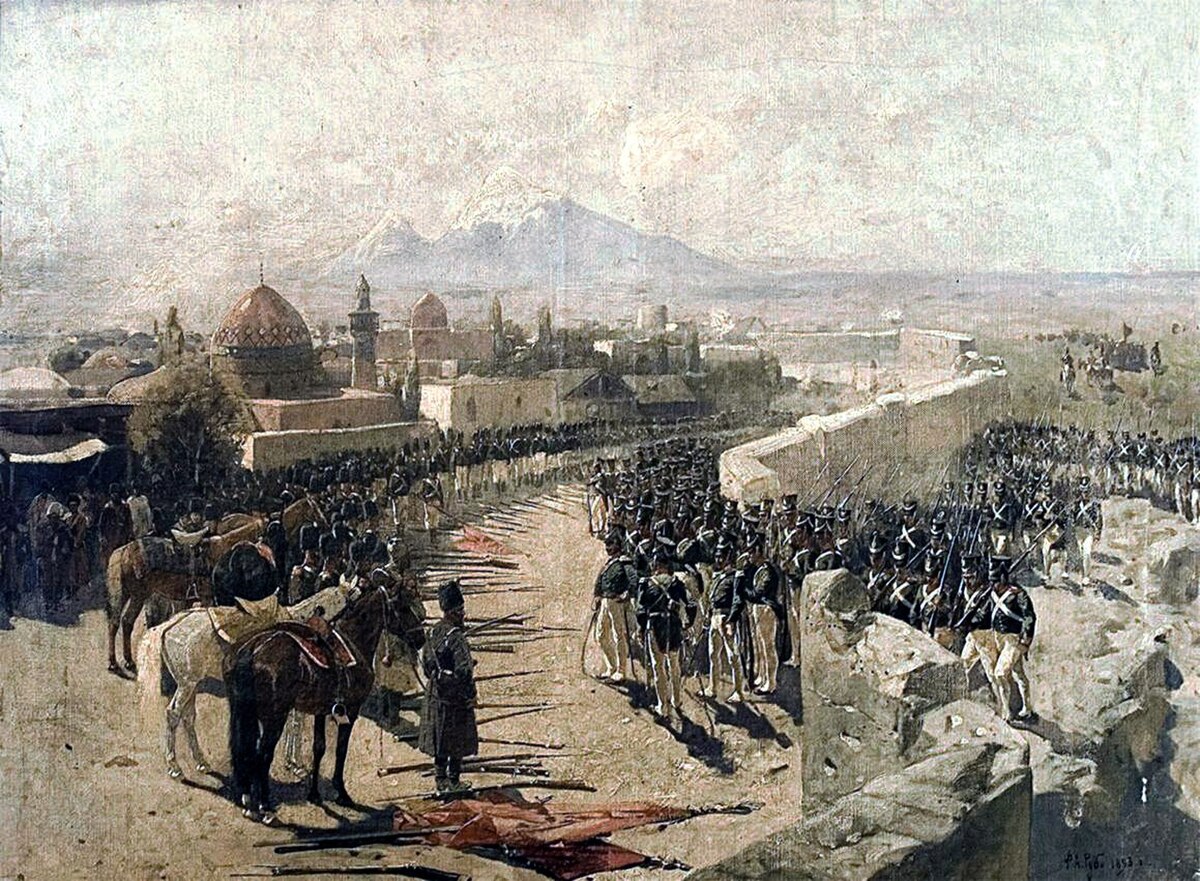
Russian Armenia
ArmeniaAt the end of the Russo-Persian War, 1826-1828, with the Treaty of Turkmenchay, Iran was forced to cede its territories comprising the Erivan khanate (comprising modern-day Armenia), the Nakhichevan Khanate, as well as the remainder of the Republic of Azerbaijan that had not been ceded forcefully in 1813. By this time, in 1828, the century-long Iranian rule over Eastern Armenia had thus officially come to an end.
A significant number of Armenians were already living in the Russian Empire before the 1820s. After the destruction of the last remaining independent Armenian states in the Middle Ages, the nobility disintegrated, leaving Armenian society composed of a mass of peasants plus a middle class who were either craftsmen or merchants. Such Armenians were to be found in most towns of Transcaucasia; indeed, at the beginning of the 19th century they formed the majority of the population in cities such as Tbilisi. Armenian merchants conducted their trade across the world and many had set up base within Russia. In 1778, Catherine the Great invited Armenian merchants from the Crimea to Russia and they established a settlement at Nor Nakhichevan near Rostov-on-Don. The Russian ruling classes welcomed the Armenians' entrepreneurial skills as a boost to the economy, but they also regarded them with some suspicion. The image of the Armenian as a "wily merchant" was already widespread. Russian nobles derived their income from their estates worked by serfs and, with their aristocratic distaste for engaging in business, they had little understanding or sympathy for the way of life of mercantile Armenians.
Nevertheless, middle-class Armenians prospered under Russian rule and they were the first to seize the new opportunities and transform themselves into a prosperous bourgeoisie when capitalism and industrialisation came to Transcaucasia in the later half of the 19th century. The Armenians were much more skilled at adapting to the new economic circumstances than their neighbours in Transcaucasia, the Georgians and the Azeris. They became the most powerful element in the municipal life of Tbilisi, the city regarded by Georgians as their capital, and in the late 19th century they began to buy up the lands of the Georgian nobility, who had gone into decline after the emancipation of their serfs. Armenian entrepreneurs were quick to exploit the oil boom which began in Transcaucasia in the 1870s, having large investments in the oil-fields in Baku in Azerbaijan and the refineries of Batumi on the Black Sea coast. All this meant that the tensions between Armenians, Georgians and Azeris in Russian Transcaucasia were not simply ethnic or religious in nature but were due to social and economic factors too. Nevertheless, in spite of the popular image of the typical Armenian as a successful businessman, at the end of the 19th century 80 per cent of Russian Armenians were still peasants working the land.
